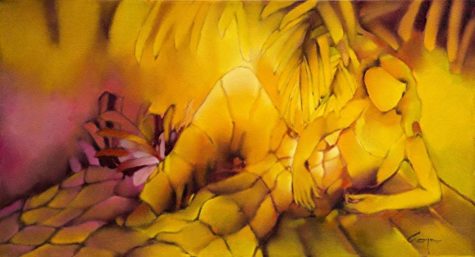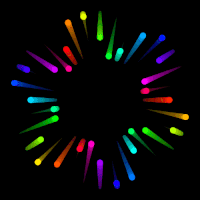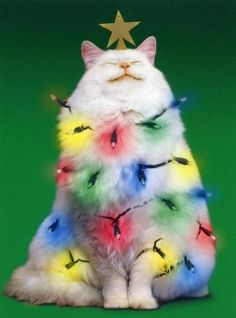The Psychology of Yellow
Some of the key characteristics that are often associated with the color yellow include:
- Warmth:
Yellow is a bright color that is often described as warm.
- Difficult to read:
Yellow is also the most fatiguing to the eye due to the high amount of light that is reflected. Using yellow as a background on paper or computer monitors can lead to eyestrain or vision loss in extreme cases.
- Frustration:
Yellow can also create feelings of frustration and anger. While it is considered a cheerful color, people are more likely to lose their tempers in yellow rooms and babies tend to cry more in yellow rooms.
- Energetic:
As seen in the following quote, yellow is often perceived as being a high-energy color. It is often used in situations and products intended to create a sense of excitement or energy. It is bright and immediately grabs the eye. It can seem fresh, intense, overwhelming, or even brash and forceful in its energy. Yellow can also increase metabolism.
“Fully saturated yellow is only good for brief exposure, because its stimulating effect is so powerful that it can build up emotional energy quite quickly. I know that I would probably go nuts in a house with LEGO yellow walls. Though it should be noted that a less saturated yellow, such as that found in whipped vegetable spread (faux butter) is mildly pleasing and cheery.”
“Yellow makes me feel cheerful and energized. I love the bright sunny color and the way it makes me feel. I feel warm like summer. Perhaps sometimes startling, but then that is what energizes me.”
- Yellow Can Be Aggressive
While it can be an energetic color, this intensity can also have a downside. Sometimes yellow can come off as very aggressive and even confrontational. In great quantities, people may be left feeling irritated or even angry when surrounded by yellow.
“I agree that there is a level of aggression and frustration associated with yellow. The walls of my school are all yellow and since the new building opened, more fights have occurred in the hallways where there is the most amount of yellow. Also, some of the classrooms that have yellow in them seen to be associated with more frustrated students.”
“I find yellow to be a highly irritating color. When I’m in a yellow room, my agitation level increases whether I was in a good mood before I walked in it or not. One reason I believe I find it so annoying is that I’m an introvert and yellow is a very exposing and in your face type of color which are traits most introverts would naturally have an aversion to. Yellow is definitely an extrovert’s color.”
- Attention-grabbing:
Since yellow is the most visible color, it is also the most attention-getting color. Yellow can be used in small amount to draw notice, such as on traffic sign or advertisements.
- Yellow Is Cheerful
For many people, yellow is seen as a bright and cheerful color. Advertisers may use it to not only draw attention, but also to evoke a sense of happiness.
“I had a math class room that was painted bright yellow half way through the year. It completely changed the atmosphere and everyone’s grades seemed to go up. Our math teacher joked it must be the new paint job, but I entirely believed it was. It gave a cheery atmosphere and the lessons were far more light and enjoyable!”
“The color yellow exudes brightness, light, vitality, energy, optimism, willingness to grow and outshine. Sun stars sunflower are the objects that mostly are associated with the color yellow.”
- Yellow Is Complex
Of course, the effects of yellow can be highly varied and complex. Not everyone responds to this color in the same way. While some people might find it bright and cheery, others may find it grating and obnoxious. Some may associate it with a warm summer day, while to others it might be reminiscent of bad memories or associations.
“I like yellow. To me it’s a happy color associated with flowers and sunshine. But our kitchen is painted yellow and I find that my fiance who has a short temper almost always loses it in the kitchen. He also becomes much more impatient and argumentative. I have always suspected that it is the color of the walls. Guests also tend to eat their food faster at the kitchen table than when we entertain in the dining room (white) or outside.”
- How does yellow make you feel?
- Do you associate yellow with certain qualities or situations?
While the color yellow can evoke a lot of different psychological reactions, it is important to remember that these responses are often unique to the individuals. Some responses, such as the tendency to find yellow difficult to read, are more universal. Other associations are often cultural and even specific to each person thanks to differing backgrounds and experiences.
From: Very Well Mind



Hello. I have been absolutely engrossed in your information on colour therapy. I am relatively new to this and have a small colour therapy room in my local Lifestyle centre. I have had very little interest in the therapy on offer but undeterred I have soldiered on. I would love to learn more and am interested in finding anything new tha you put on line. If you could e mail me I would be very grateful.
Yours with love and light .
It’s easy to subscribe. Just scroll down if you are on a smart phone, you’ll see a link to subscribe via feedburner. If you are on a pc or laptop, the link is in the side bar.